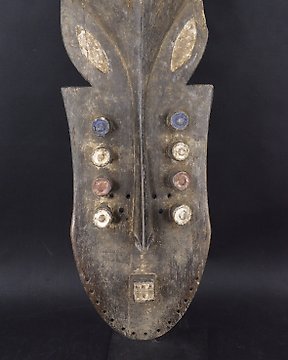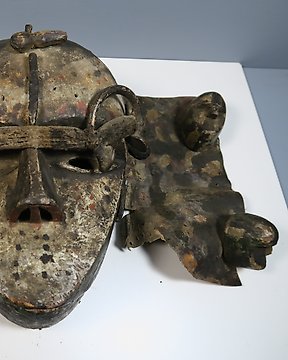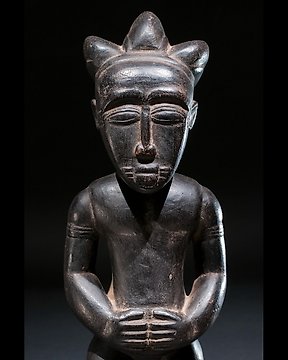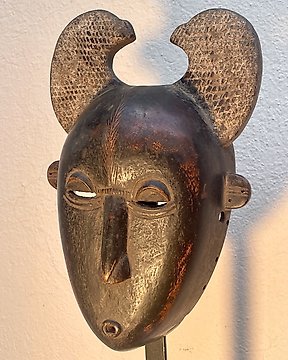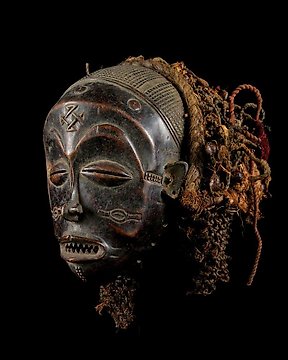large female ancestor statue - Bété. - Côte d'Ivoire
No. 82827113
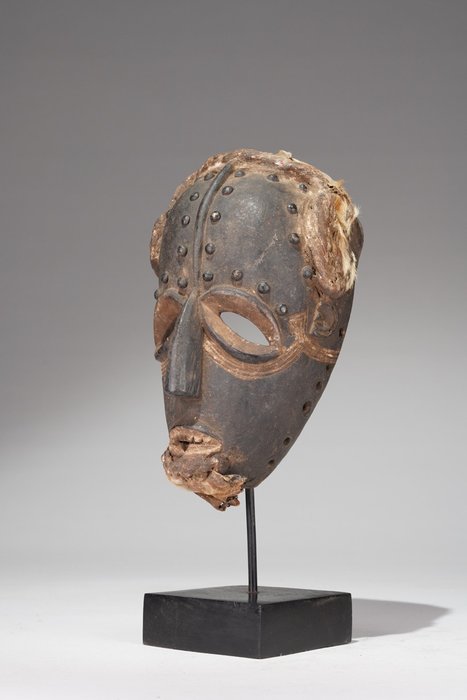
Bete - Côte d'Ivoire (No Reserve Price)
No. 82827113

Bete - Côte d'Ivoire (No Reserve Price)
A Beté mask, Ivory Coast, with rough aesthetics and rugged features of a half opened mouth showing white teeth, straight nose, two almond shaped downturned eyes , the forehead is wide, two small ears at each side of the mask, the rims of the mask are punctured with holes to attach a costume to it, a line dividing the forehead and metal beads decorating each side of the forehead, ornamental grooves beneath the eyes, and hair like material on the head and where a goatee would be. Signs of Use. Certificate of origin and provenance.
“These masks are carved from wood, designed to depict characteristics of the hostile spirits found in the environment where the Bete live. The Southwestern part of Cote d’Ivoire, where the Bete People live, is covered in dense forest. The Bete’s concept of respect for social rules in their village are carried over to their respect for aggressive and hostile nature spirits they believe Gre masks embody. The people who wear the masks are viewed as protective agents that represent the spiritual forces. Distorted features like facial protuberances, horned heads, bulging forehead, and tubular eyes create the grimacing face gre masks are known for. Gre masks are designed to provoke terror through embodying wild animals. Some are said to resemble living wild animals such as wild hogs or chimpanzees that are both found in the heavy tropical forests .The Bete use the term “gre”to describe terror, hence the name gre mask. Emphasis on a an animals strength and ferocity are the traits portrayed in the Gre mask, giving it power to expel evil forces and disease through masked dance performances.”
– Tessa Wright ’18, Undeclared
Sources:
Middleton, John, Joseph C. Miller. New Encyclopedia of Africa. Farmington Hills, Michigan: The Gale Group, 2008. 517-528 volume 1
Celenko, Theodore. A Treasury of African Art: from the Harrison Eiteljorg Collection. Bloomington: Indiana University 1983.
Hahner-Herzog, Iris, Maria Kecskési and László Vajda. Afrikanizche Masken; aus der Sammlung Barbier-Mueller, Genf. München, Germany: Prestel-Verlag, 1997.
“Bete, Gre (Gle) Mask.”Artes Africanae. Accessed April 2015.
You might also like
- 16+
This object was featured in
How to buy on Catawiki
1. Discover something special
2. Place the top bid
3. Make a secure payment

